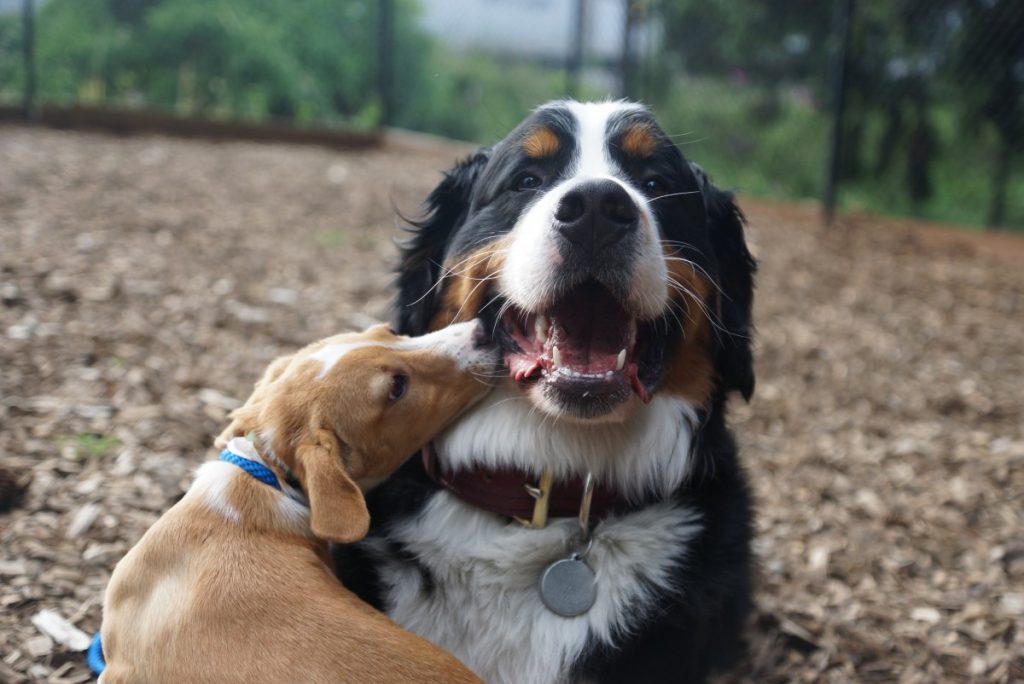
How playgroups and naptime help the dogs at OHS
Being in a shelter is stressful for most dogs. The noise, smells and constant stream of people can send a dog’s brain into overdrive. Despite OHS’s great facility, dedicated staff and volunteers, sometimes dogs need more. They need each other. Playtime with other dogs can be essential to keeping dogs happy, healthy and relatively calm while they wait for their forever home.
While the concept of a playgroup is simple, it takes highly skilled staff and volunteers to make sure that playtime is a positive experience for each dog.
It begins with some careful matchmaking. “We usually begin by identifying dogs who we know enjoy the company of other dogs,” says Tanya Roberts, OHS Training and Behavior Manager. “Adolescent dogs also tend to make good candidates for playgroup.”
The next step is hand picking who gets to play together. “Our team is familiar with a dog’s behavior before we try introducing them to potential playmates,” adds Tanya. “Introductions are done slowly, and safety is the top priority.”
Playgroups are intentionally kept small and closely monitored. “You have to keep a constant eye on the dogs and watch for subtle changes in body language,” says Tanya. “The most important thing is safety for the dogs and that playgroup is a good experience for them.”
Luba Wagner, from the OHS Admissions team, coordinates the playgroups and has seen the benefit for shy dogs and those who are picky about their canine friends. “Sometimes we use ‘helper dogs’ to help shy dogs come out of their shell,” says Luba. In some cases, playgroups can benefit dogs with a history of not getting along with other dogs. Luba tells the story of Darla as an example. “She had a tough time approaching other dogs and being in a shelter made her frustrated and reactive. We found the right dogs for her to play with and her stress level immediately came down. The day after we put her in playgroup, she was adopted.”
Playgroups benefit adopters too. “Dogs who participate in playgroups are able to keep up their social skills,” says Tanya. “And this can help them be successful in a home.”
Time for a Snooze
While playgroups give dogs a chance to release excess energy and have fun, naptime teaches them how to settle. Life in a shelter is filled with stimulation, so downtime is important for managing dogs’ stress level. “Naptime helps dogs practice a behavior that they will need in a home,” says Tanya. “Especially for adopters who work full time.”
It’s lights out for one hour, 2:30-3:30 p.m., every day for dogs in the behavior modification program and those who are not in the public areas of the shelter.
“It’s very sweet to see the staff ‘shhh’ each other and say ‘it’s naptime’,” says Tanya.












